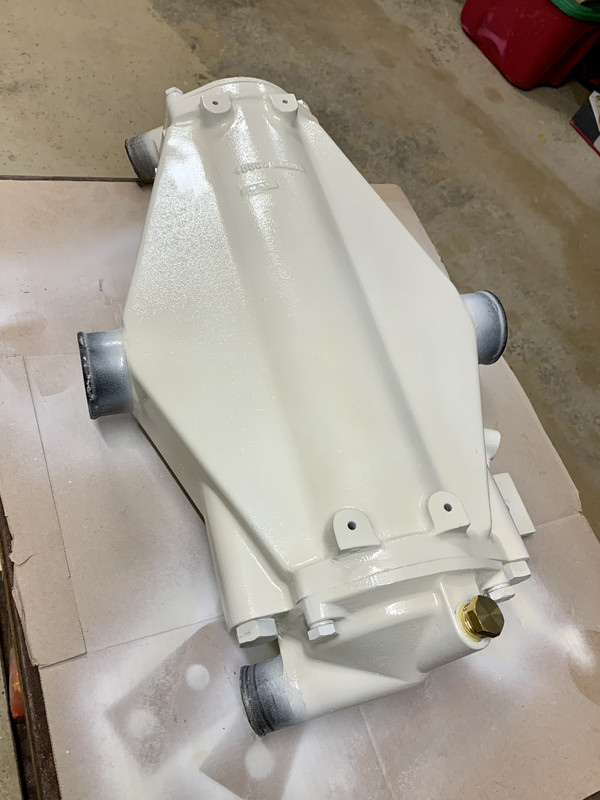- Oct 6, 2006
- 12,152
- Boat Info
- 1996 450DA
- Engines
- 3116 Caterpillars
I am in Panama City Beach for a few days and stopped by to visit my friends in the Service Department at the marina we were in for 30 years. It is like someone dropped a bomb on Cummins owners. A late model 42 DB with 6CTA's is waiting on complete new after cooler assemblies, a newish 44DB with QSC's had an after-cooler core fail and ingested sea water thru the intake, an older 40DA had the same issue, The 44 DB owner is a new owner and decided to just replace both engines, and a 45EB just replaced his 6CTA's with New QSC's.
All of the above were caused by a lack of regular after-cooler maintenance………..a pilot who has always done his own maintenance had a schedule change and wasn't using his boat; a 83 year old suffering from arthritis can't get in to the bilge any more; a family owned boat that the brother, son, nephew and owner fund the time to go fishing, but never thought about his cooling system maintenance, and an owner who refused to pay the marina for his maintenance got tied up in rebuilding after a recent storm.
Life happens, but diesel engines will not tolerate seawater from an after-cooler leak in the intake air. I understand it is hard and heavy work and if you aren't able to do it or just don't want to pay a qualified mechanic top do it, please don't let your after-cooler maintenance slide because "They run fine", but one day they won't and you won't like the outcome. And for those of you who just don't use the boat much anymore, a few sunset cruises and sitting at the dock doesn't change the fact that seawater corrosion of the after-cooler continues while you watch soap operas or Ellen in the afternoon or do your day job.
Delivery on Cummins after-coolers is 4-6 months, but new QSC's can arrive in 2-3 weeks if you decide to repower and can write the $120,000 check for the new engines plus cover the yard and mechanics bill for the labor.
Frank
All of the above were caused by a lack of regular after-cooler maintenance………..a pilot who has always done his own maintenance had a schedule change and wasn't using his boat; a 83 year old suffering from arthritis can't get in to the bilge any more; a family owned boat that the brother, son, nephew and owner fund the time to go fishing, but never thought about his cooling system maintenance, and an owner who refused to pay the marina for his maintenance got tied up in rebuilding after a recent storm.
Life happens, but diesel engines will not tolerate seawater from an after-cooler leak in the intake air. I understand it is hard and heavy work and if you aren't able to do it or just don't want to pay a qualified mechanic top do it, please don't let your after-cooler maintenance slide because "They run fine", but one day they won't and you won't like the outcome. And for those of you who just don't use the boat much anymore, a few sunset cruises and sitting at the dock doesn't change the fact that seawater corrosion of the after-cooler continues while you watch soap operas or Ellen in the afternoon or do your day job.
Delivery on Cummins after-coolers is 4-6 months, but new QSC's can arrive in 2-3 weeks if you decide to repower and can write the $120,000 check for the new engines plus cover the yard and mechanics bill for the labor.
Frank







